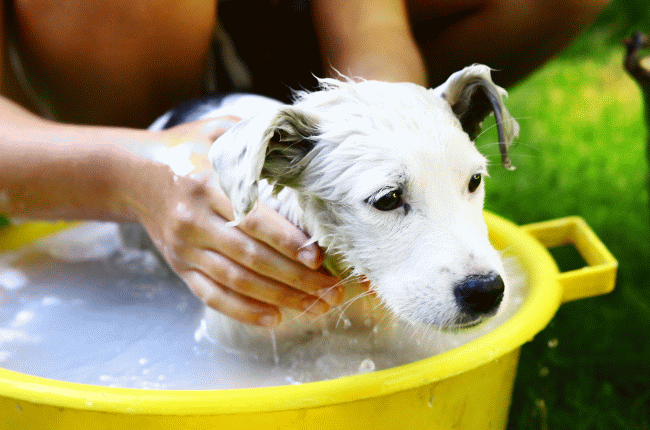
When it comes to defeating an insect infestation, you don’t want to take any chances! Some pet parents find that even after washing their pet with a generous dose of flea-killing shampoo, the little buggers just won’t go away. This may be because they are not washing the animal correctly, or they are forgetting some key details about the procedure. Though there are a number of flea control products designed to monitor parasite activity both in the house and on your pet after he has been cleaned, an initial shampoo is the obvious first step. Before you head to the pet store, be sure to consult a veterinarian or groomer for insight on which products are most effective. Here is our step-by-step guide on how to conquer those persistent pests once and for all
- If you do not have access to professional advice, and time is of the essence, select a shampoo that says it will KILL fleas. “Protecting” against fleas may only detach the bugs from the animal’s scalp, but will not actually destroy them.
- Begin in a wash bin OUTDOORS. Doing so inside will only create a mess, or allow any desperate fleas to jump to another surface before doomsday hits.
- Wet the dog or cat with water. The fleas will begin moving “uphill” so start lathering the flea shampoo around the pet’s head, neck, chest and back all the way through to the tip of the tail, to catch all the fleas as they move.
- Continue lathering the shampoo all over the body, down to the legs until the entire surface is completely saturated. Scrub vigorously, down to the scalp.
- Using a flea comb, work through the fur to ensure that the entire area has been covered down to each hair root. Sifting the comb against the grain of the hair will also help you access any larvae that are situated down deep into the coat.
- Search through the fur and note if there are any survivors. If so, reapply more product and go through the whole process again – head to tail. Remember, even if your cat or dog is getting anxious or antsy, it is better to finish the job in a thorough fashion rather than having to deal with another flea infestation and bug-ridding treatment.
- Once you are positive your pet is parasite-free, rinse him thoroughly, using a flea comb to remove the dead fleas and eggs from his coat.
- Finish by snapping a new flea collar around the pet’s neck to keep the little buggers away.
NOTE: Before your cat or dog is allow back inside, you must first treat the house. If your pet was a bug-host, your furniture, blankets, pillows, and carpets might be as well. Do not allow your furry pal to enter until all fleas have been killed, or you will have to go through this process all over again.

